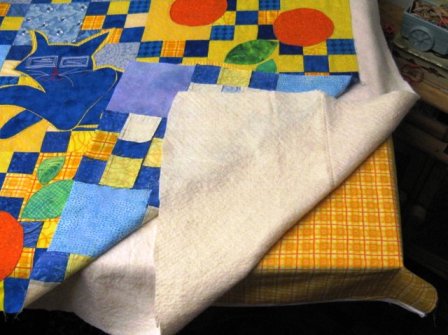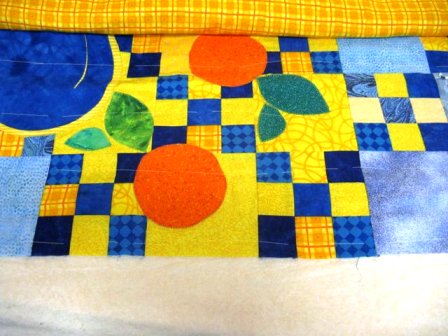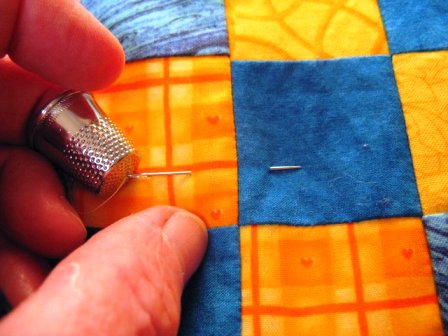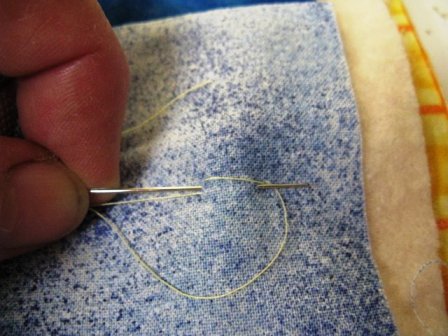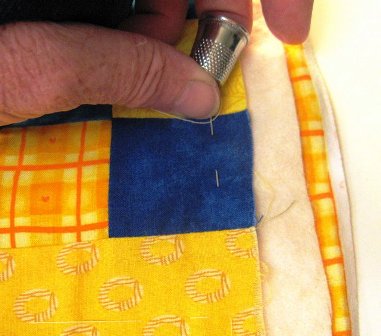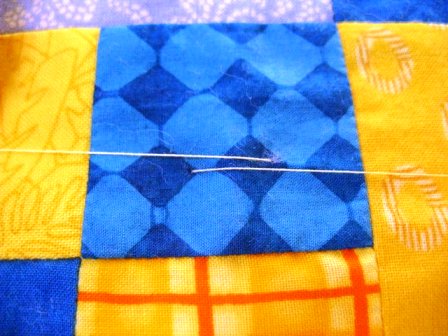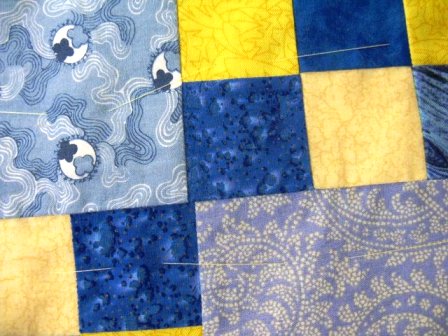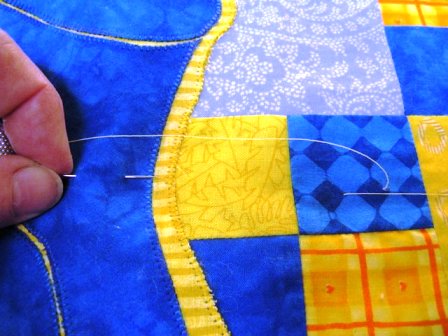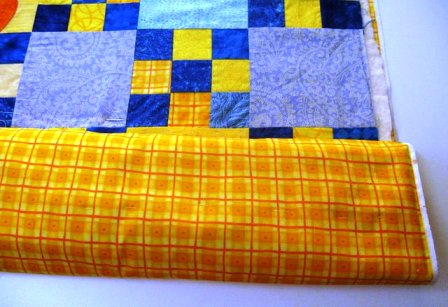Quilt Sandwich and Baste
By Terry White
Preparing your quilt top for quilting is very important. You spent time and creativity making your lovely quilt….so don’t spare the time for setting up your quilt for the quilting process.
I am aware that some people use special quilter’s safety pins to pin baste their quilts. I am not a fan of this. Pinning like this distorts the fabric sandwich and can tear the quilt. It is also pretty hard on the hands. So, I’m going to describe the very straightforward method of basting a quilt. This works for hand quilting as well as machine quilting.
For this quilt, I am using a “traditional” cotton batting. It is cotton, not very fluffy and is very easy to machine quilt. This is a good batting for a lightweight quilt and for the new machine quilter. Take the batting out of its packaging, open it up and let it rest for a day. I will give it a press after the fibers have relaxed, and if there are wrinkles.
For best results, make sure that your piece of batting is larger than the quilt top and that the backing fabric is larger than the batting. This is because when you quilt, the bottom two layers will tend to draw up.
I press the backing fabric with spray starch or sizing…this helps prevent wrinkling on the quilt back. Be sure that your quilt top is nicely pressed.
Find a nice big surface on which to lay down the backing (face down), layer the batting on top of this, then lay the quilt top on top of this….this is known as a “quilt sandwich”.
The above photo shows how we will be basting the quilt. Start at one end of the quilt. Use a strong smooth thread and a long sharp hand needle. I use hand quilting thread for this in a color that contrasts with fabric, but is in the same color family. For instance, if I used a bright red thread to baste and some of the thread was left behind; I could have red strings on the quilt or in the batting. I used a light yellow hand quilting thread.
The following photos will illustrate basting step-by-step,
Thread the needle with a thread that is as long as the line of basting. This works with a small quilt like this. I start the basting in the middle of the quilt edge and stitch to one end. Then, I re-thread the needle and baste to the other end.
When I get to an end, instead of knotting the thread, I take a back stitch.
After the backstitch, I baste down along the edge of the quilt. This bastes the edges at the same time as basting across.
I re-thread the needle and begin to stitch to the opposite end. Now, I am left-handed, so it easy to start from the middle and then stitch left to right to finish at the right edge. It is difficult for me to re-thread the needle and stitch with my right hand to the left edge of the quilt. So, I baste with back stitches. So, on the left side of the quilt, my basting stitches look like the photo above.
When basting, avoid putting your needle into a patchwork seam. Each line of basting can be about 2 ½ to 3 inches apart.
The above photo shows me backstitching to the left of the quilt. You can see how long the basting stitches can be. When basting across appliqué shapes, avoid piercing the edge of the appliqué where you have stitching.
As you baste, you can roll up the quilt. This makes it easy to continue to baste. This way you can avoid trying to shift the whole quilt for each basting line.
I started to baste my quilts like this about 25 years ago when I was hand quilting my quilts in a really big hoop. It kept the quilt very nicely together as I quilted.
For more articles by Terry White, click here.
And click here for the best quilting scissors.

